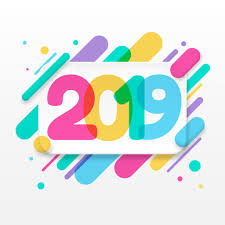Older adults can save tens of thousands of dollars annually by choosing assisted living communities over aging in place in their homes.
Unlike point solutions, Inspiren unifies resident safety, care planning, staffing, and emergency response into a single AI-powered platform.
An artificial intelligence-powered virtual assistant platform for senior living and care providers.

 Voice First -- The year began and ended with speaking. And shouting. Strolling is not the right word, but as we approached the Las Vegas Convention Center last January, Google Assistant was on giant billboards all around – with competing and nearby giant Amazon Alexa signs. We are attending again this year – and I cannot imagine what is left to say, so to speak. But I am sure the blaring will begin at the door. Here are the most read blog posts from 2019. Happy New Year – and onward to 2020, the publication of the now-completed
Voice First -- The year began and ended with speaking. And shouting. Strolling is not the right word, but as we approached the Las Vegas Convention Center last January, Google Assistant was on giant billboards all around – with competing and nearby giant Amazon Alexa signs. We are attending again this year – and I cannot imagine what is left to say, so to speak. But I am sure the blaring will begin at the door. Here are the most read blog posts from 2019. Happy New Year – and onward to 2020, the publication of the now-completed  Diabetes is a critical health problem.
Diabetes is a critical health problem.  The second year of the Summit tackled issues in town and far away. In the portfolio of the 2019 events produced by
The second year of the Summit tackled issues in town and far away. In the portfolio of the 2019 events produced by  Is the healthcare consumer ready for voice assistants? Not quite. There is a technology overhaul underway – the biggest change in user experience since the introduction of the web browser in 1991. Voice First technology – the ability to use natural language to speak to and be spoken to by devices and software – has become at least one mandatory user interface in every business and consumer interaction. From Voice recognition technology to Smart Speakers to Voice Assistants, it is now pervasive – in the year 2020, 50% of all searches will be by voice. From a sheer quantity standpoint, the plethora of devices from Amazon (claiming sales of 100 million gadgets at the end of 2018, plus a dozen new ones introduced for the 2019 holiday sales period) captures the stampede nature of the market. However, by end of January, 2019, Google claimed to have Google Assistant running on 1 billion devices – and by the summer, began declaring a new version – Google Assistant 2.0.
Is the healthcare consumer ready for voice assistants? Not quite. There is a technology overhaul underway – the biggest change in user experience since the introduction of the web browser in 1991. Voice First technology – the ability to use natural language to speak to and be spoken to by devices and software – has become at least one mandatory user interface in every business and consumer interaction. From Voice recognition technology to Smart Speakers to Voice Assistants, it is now pervasive – in the year 2020, 50% of all searches will be by voice. From a sheer quantity standpoint, the plethora of devices from Amazon (claiming sales of 100 million gadgets at the end of 2018, plus a dozen new ones introduced for the 2019 holiday sales period) captures the stampede nature of the market. However, by end of January, 2019, Google claimed to have Google Assistant running on 1 billion devices – and by the summer, began declaring a new version – Google Assistant 2.0.